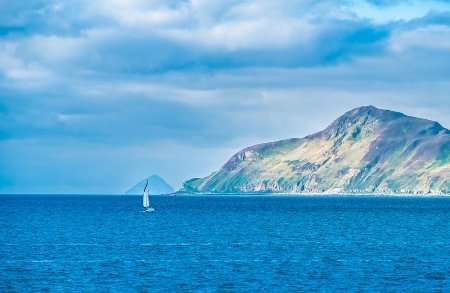Seabed landscape crucial for fish conservation

Conservation and fisheries management strategies should take into account seabed landscape in order to maintain fish conservation.
A new study led by the University of Glasgow in collaboration with the University of Strathclyde and Marine Scotland Science and that is published in PLOS ONE, demonstrates the importance of protecting different seabed landscapes in order to maintain a healthy and diverse stock of fish, including cod, haddock and whiting.
Currently nature conservation and fisheries management often focus on protecting a single seabed type that is considered to be important to a commercial species, but do not routinely consider the importance of a mixture of seabed types on the marine ecosystem.
In particular, the authors highlighted the importance of a diverse and varied seabed landscape for the health and protection of Atlantic cod.
Researchers used predictive mapping and examined a 250 square kilometre area south of Arran in the Firth of Clyde from June to September in 2013 and 2014.
Lead author of the study Sophie Elliott, from the University of Glasgow, said: "The interaction of species within their landscape is rarely taken into consideration. This investigation highlights the importance of looking at landscape measures in the conservation and management of mobile demersal fish.
"Our work has shown that the mixture of seabed features matters to juvenile fish of commercial importance and understanding this could improve our ability to protect marine ecosystems and support fisheries."
At present our marine conservation policies focus on protecting particular features such as seagrass and coralline algae beds. These policies do not consider the mixture of different features and how they could be of benefit to the wider ecosystem.
Dr David Bailey, from the University of Glasgow's Institute of Biodiversity, Animal Health and Comparative Medicine, said: "The paper breaks important new ground by showing how the variety of different seabed types across an underwater landscape can matter to fish. The techniques and ideas developed here could help identify the most important fish nursery areas, allowing these to be prioritised for protection."
The authors hope to test their approach on a larger scale and include other species, which are of conservation and fisheries management interest.
The study, "Landscape effects on demersal fish revealed by field observation and predictive seabed modelling" is published in PLOS ONE.
More information: Sophie A. M. Elliott et al. Landscape effects on demersal fish revealed by field observations and predictive seabed modelling, PLOS ONE (2017). DOI: 10.1371/journal.pone.0189011
Journal information: PLoS ONE
Provided by University of Glasgow




















